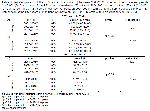Drug abuse and the use of addictive substances stand as prominent subjects within the realm of pharmaceutical toxicology. Medical toxicologists are frequently sought for consultations in treating individuals grappling with addiction to various substances, including alcohol, tobacco, heroin, lysergic acid, or others, across a spectrum of care settings
19. Notably, many highly addictive substances, such as amphetamine and THC, also possess legitimate medical applications. The illicit misuse of amphetamine, employed medicinally for attention deficit-hyperactivity disorder (ADHD), has become widespread in contemporary society
20. THC, the active component in marijuana, finds application as an anti-vomiting drug for cisplatin-induced vomiting (21).
MDMA ecstasy and cannabis, illicit substances prevalent in numerous countries, are frequently co-consumed. These substances take a forefront among addictive agents. An in vivo study observed that acute MDMA administration mitigated physical somatic withdrawal symptoms in THC-dependent mice 22. In the study, epidemiological evidence was presented to establish a correlation between drug use and supply. The findings elucidate a positive relationship between ecstasy and marijuana in both T and W since 2004. Recreational ecstasy/MDMA users commonly abuse cannabis, to mitigate the initial psychostimulant effects of MDMA and alleviate post-MDMA mood drops 23. Additionally, preclinical studies administering MDMA with THC aimed to provide neuroprotection and/or prevent toxicity, revealing that this combination induced hyperthermia while reducing hyperactivity 23. The escalation in MDMA and THC search volumes suggests their potential individual and combined usage.
Young individuals frequently combine legal and illegal drugs for recreational purposes. The United Nations European Drug Report highlights the co-use of marijuana and ecstasy among the young adult population 24. Despite marijuana being utilized to enhance psychotherapy effects in the 1970s, its contemporary usage has become illegal in various countries 25. Between 2005 and 2010, tranquilizer and sedative abuse constituted around 40% of all drug use in Europe 26. Opioid abuse is reported more frequently in men who use marijuana, tobacco, and alcohol 27. Ecstasy, having evolved into one of the psychostimulant drugs for world recreational use, is particularly favored in nightlife settings 24. Hence, factors contributing to substance abuse can be assessed at individual, community, and societal levels, including peer norms 28.
Correlation analysis is crucial for understanding the relationship between public interest in ecstasy and marijuana, both in T and W. Factors such as police enforcement, anxiety regarding drug use, and potential health threats can negatively impact drug demand. The positive correlation between the RSV values of these drugs in T and W suggests that these two substances were collectively evaluated in search profiles as keywords. Turkiye's EMCDDA membership discussions and the initiation of trend data worldwide have been ongoing since 2004. Search data have progressively improved over time, leading to higher RSV values in the first two years. When evaluating this timeframe separately, the RSV values from the initial two five-year periods surpass those of the last five years. Our study reveals that, when examining the last five years independently, the interest in marijuana searches surpassed that of ecstasy on a W scale, with a similar trend observed in T. While interpreting spikes in search volume may pose challenges, it undoubtedly elevates awareness of potential threat situations. This period might have been influenced by predictors such as police inspections, concerns, and health threats, which are crucial determinants of drug demand and supply.
As a valuable and easily accessible source of search data, google trends utilizes information accumulated over the years 29. This study, by presenting multi-year data on trends in illicit drug use, while not specifying a particular geographical location and lacking individual factor data, contributes to law enforcement's ability to respond effectively to drug production and distribution networks. Consequently, google trends, reflecting the intelligence and habits of a vast web search population and an internet-dependent society, facilitates the tracking of drug demand, supply, and addiction at a faster pace than traditional systems.






